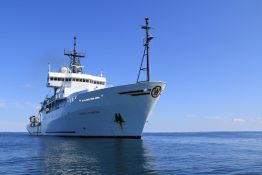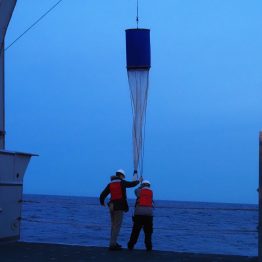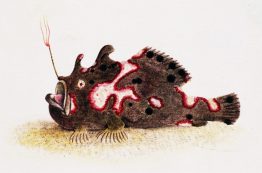Friday, May 8 marked the triumphant return of the research vessel Thomas G. Thompson, which arrived home to a sunny Seattle after 823 days at sea. University of Washington Oceanography community members waited along the city’s waterways (practicing social distancing) from the Ballard Locks to the UW campus holding welcome home signs. The excitement was palpable, with many documenting the moment via social media for their colleagues who weren’t there in person.
Read more »Pacific oysters in the Salish Sea may not contain as many microplastics as previously thought
Plastic pollution is an increasingly present threat to marine life and one which can potentially impact your dinner table. Oysters, and other economically valuable shellfish, filter their food from the water where they may also inadvertently capture tiny microplastics. The ingestion and accumulation of these microplastics can have detrimental effects on their health and may be passed to other animals, including humans, through the food chain.
Read more at UW News »Undergraduate research takes to the high seas
Being in the middle of the ocean on a giant research vessel can be surreal — in every direction, there’s water as far as the eye can see. For 17 seniors in the UW School of Oceanography, this was their reality for nearly two weeks as they conduct research for their thesis off the coast of South Africa. “You’re so far from the coast, you forget the rest of the world is there,” says Ashley Lobao, an Oceanography student.
Read more »Apprentices build floats and careers in Argo Lab
In the basement of one of UW’s oceanography buildings, visitors see all sorts of strange, ocean-going equipment. What are those long, yellow tube-things in there — and what on earth do they do? Turns out they’re an instrument known as an Argo float, and they are used globally to monitor ocean properties such as temperature, salinity, pressure and more recently, biogeochemical elements such as oxygen and nitrate.
Read more »Anatomy of a frogfish: New book explores world of fishes with arms and legs
Any old fish can swim. But what fish can walk, scoot, clamber over rocks, change color or pattern and even fight? That would be the frogfish. The latest book by Ted Pietsch, UW professor emeritus of aquatic and fishery sciences, explores the lives and habits of these unusual marine shorefishes. “Frogfishes: Biodiversity, Zoogeography, and Behavioral Ecology” was published in March by Johns Hopkins University Press.
Read more at UW News »





